This feels and sounds like graphite rods. Looks like wood, but super dense and stinks to high heaven when I drilled it. Smells like an electrical fire or burning hair. Can anyone verify this is ebonite? I have never had any. I got it from a friend of mine. Thank you for any responses. Aaron
You are using an out of date browser. It may not display this or other websites correctly.
You should upgrade or use an alternative browser.
You should upgrade or use an alternative browser.
Is this Ebonite?
- Thread starter Airbear77
- Start date
Signed-In Members Don't See This Ad
Signed-In Members Don't See This Ad
The Penguin
Member
looks like it could be.
does it smell like sulphur? if so, that's a dead giveaway that it's ebonite.
does it smell like sulphur? if so, that's a dead giveaway that it's ebonite.
edstreet
Member
show endgrain.
Brooks803
Member
Hard to tell from the pics. If you can get a closeup as well as endgrain it'll be easier.
From what I can tell the second one on the left looks very much like this:

This isn't ebonite but something else. It does stink while drilling and turning but nothing like ebonite. Ebonite will smell more like burning rubber.
No matter what it looks like cool stuff! Let me know if you want to share any :biggrin:
From what I can tell the second one on the left looks very much like this:

This isn't ebonite but something else. It does stink while drilling and turning but nothing like ebonite. Ebonite will smell more like burning rubber.
No matter what it looks like cool stuff! Let me know if you want to share any :biggrin:
Indiana_Parrothead
Member
If it is Ebonite that Green color is one that I have never seen. Nice score.
Mike
Mike
This feels and sounds like graphite rods. Looks like wood, but super dense and stinks to high heaven when I drilled it. Smells like an electrical fire or burning hair. Can anyone verify this is ebonite? I have never had any. I got it from a friend of mine. Thank you for any responses. Aaron
End grain is attached
Attachments
toddlajoie
Member
I gotta say, it LOOKS like wood!!!???!!! any chance it was stabilized in some unusual compound which could explain the smell and feel?
edstreet
Member
This feels and sounds like graphite rods. Looks like wood, but super dense and stinks to high heaven when I drilled it. Smells like an electrical fire or burning hair. Can anyone verify this is ebonite? I have never had any. I got it from a friend of mine. Thank you for any responses. Aaron
End grain is attached

This could still be ebonite but we know which ebonite it is *NOT*.
I gotta say, it LOOKS like wood!!!???!!! any chance it was stabilized in some unusual compound which could explain the smell and feel?
There is a chance of that I guess. My buddy doesn't remember where he got them. He has had them for years.
steve worcester
Member
So if it is real ebonite, the stuff that they used to make bowling balls and such (which means I have no earthly idea what else they made from it) there would be no grain structure like the pictures.
Brooks803
Member
I don't think it's ebonite. I have no clue as to what it is, but I don't think it's ebonite.
This is the Ebonite I buy for pipe stems-
 also available in black.
also available in black.
I get it from this guy on Ebag.-- http://stores.ebay.com/Vermont-Freehand/ebonite-rods-/_i.html?_fsub=4629746014
I get it from this guy on Ebag.-- http://stores.ebay.com/Vermont-Freehand/ebonite-rods-/_i.html?_fsub=4629746014
toddlajoie
Member
This is the Ebonite I buy for pipe stems-also available in black.
I get it from this guy on Ebag.-- http://stores.ebay.com/Vermont-Freehand/ebonite-rods-/_i.html?_fsub=4629746014
Well, the Japanese Plate Ebonite that he lists could look like some of that if it were sliced square and rounded:
yaroslaw
Member
Endgrain doesn't look like German or Indian ebonite. It can't be Japanese also because they started to produce color thing not so long ago. So this stuff if it is ebonite could only be antique. SMELL will tell you if it is it. Try to burn a shavings. They will smell like sulphur and burning rubber.
edstreet
Member
Ebonite can be made in the home environment, i.e. your back yard.
Ebonite has been made over the years by many sources and not just the famous ones that have been referenced here.
Hence me saying by viewing the endgrain we know which ebonite manufactures it is *NOT*.
Ebonite has been made over the years by many sources and not just the famous ones that have been referenced here.
Hence me saying by viewing the endgrain we know which ebonite manufactures it is *NOT*.
yaroslaw
Member
And the only way to tell is by smell. Even machining properties are very-very different between makers.
PS Ed, how about more info on home-making ebonite? I see next year ebonite casts in "Color casting contest"
PS Ed, how about more info on home-making ebonite? I see next year ebonite casts in "Color casting contest"
edstreet
Member
And the only way to tell is by smell. Even machining properties are very-very different between makers.
PS Ed, how about more info on home-making ebonite? I see next year ebonite casts in "Color casting contest"
The Making of Ebonite[gallery]/0/ click on the first photo and read the captions, then do the < and > arrows.
You can tell by smell yes, also by grain patterns, how it handles and the like.
The Penguin
Member
very interesting, but I hardly would call that process "home" friendly
yaroslaw
Member
Hm, I know chemical process making ebonite, but I expected from you info on "home making ebonite". All that machinery is not even back yard friendly (especially extruder).
thebillofwrites
Member
Have you turned any of it yet?
Bill
Bill
Have you turned any of it yet? Bill
No, I drilled a small piece and it smelled like I burnt a pile of wires and hair. My shop is in the basement below the den. The smell comes right up into the house so I stopped.
micharms
Member
Looks to me like it could be a product I use to buy years ago. It was called Pakkawood. It does smell when you drill it.
Michael
Michael
thebillofwrites
Member
Have you turned any of it yet? Bill
No, I drilled a small piece and it smelled like I burnt a pile of wires and hair. My shop is in the basement below the den. The smell comes right up into the house so I stopped.
That sure does not sound like a very pleasant odor
The "Ebonite" or "Hard Rubber" I use does give off a Sulfur like smell, as others have mentioned already. But nothing so horrible as to make me want to stop drilling or turning it.
If you ever do decide to turn some, let us know how it handles, and maybe post a close-up pic of the shavings. Don't know if that would make a definite determination, but it might help.
One more thing......how heavy or dense does it seem compared to other familiar materials?
Bill
Looks to me like it could be a product I use to buy years ago. It was called Pakkawood. It does smell when you drill it. Michael
I looked that up and I think it is something similar to that. I appreciate the info very much. After researching that I believe I may have found what it may be. Aaron
edstreet
Member
I will have an epic update for this thread soon. Not sure time frame but at most a few days.
edstreet
Member
To answer the question "Is this Ebonite" we must look at what is ebonite. Ebonite is made from dust and dust we shall see when turned. Ebonite is also extruded among other things, so that should show up good in the photo details below.
After we answer that topic question I shall follow up with "if not ebonite then what is it?"
:Smell and visual:
As I opened the shipping package today I took good note of what it smelled like. I have a very good sense of smell and this did not smell like any ebonite that I have smelled before. This may not mean it's not ebonite but it did rule out many types of ebonite.
Here we see a side by side shot of the mystery blank (left) and black Nikko ebonite (japanese) (right), also the very end right is Marine blue NYH Ebonite (german)
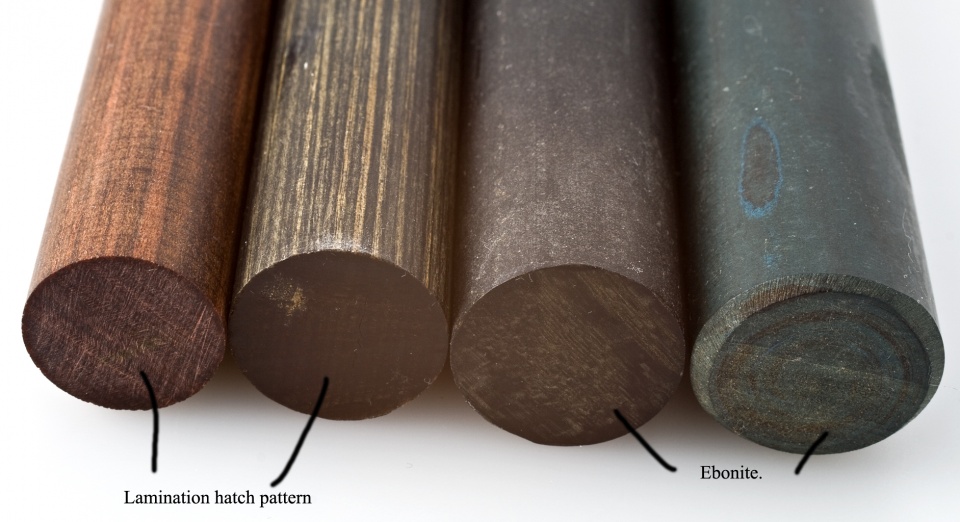
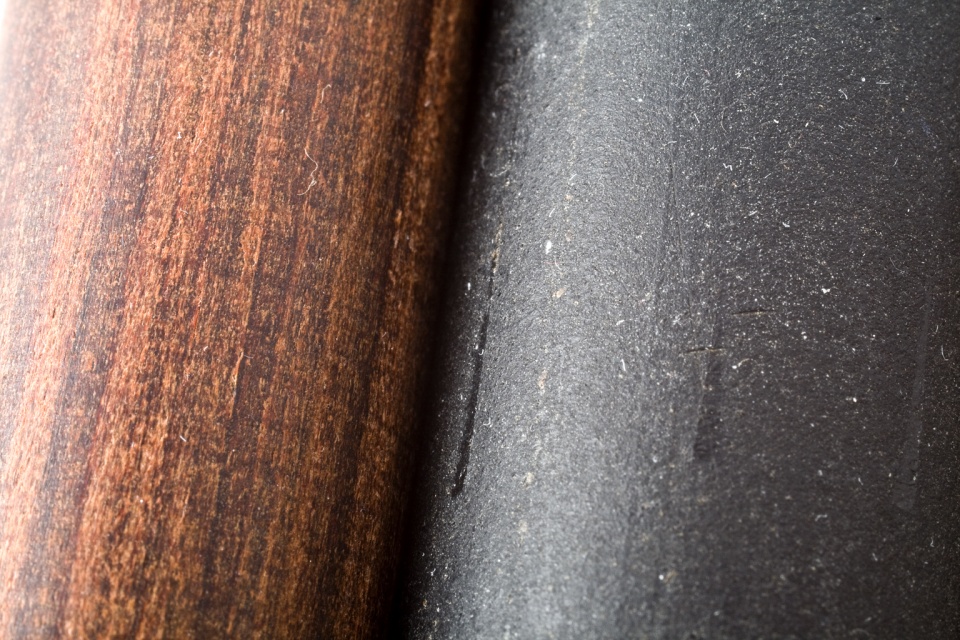
First thing to note, the banding marks on the left block. Looks like there was a layer of one material with grain direction in a slant was pressed to another layer of same or similar dyed material but grain direction was different, thus creating a hatch pattern.
The banding is from being turned. It was only present on the red block.
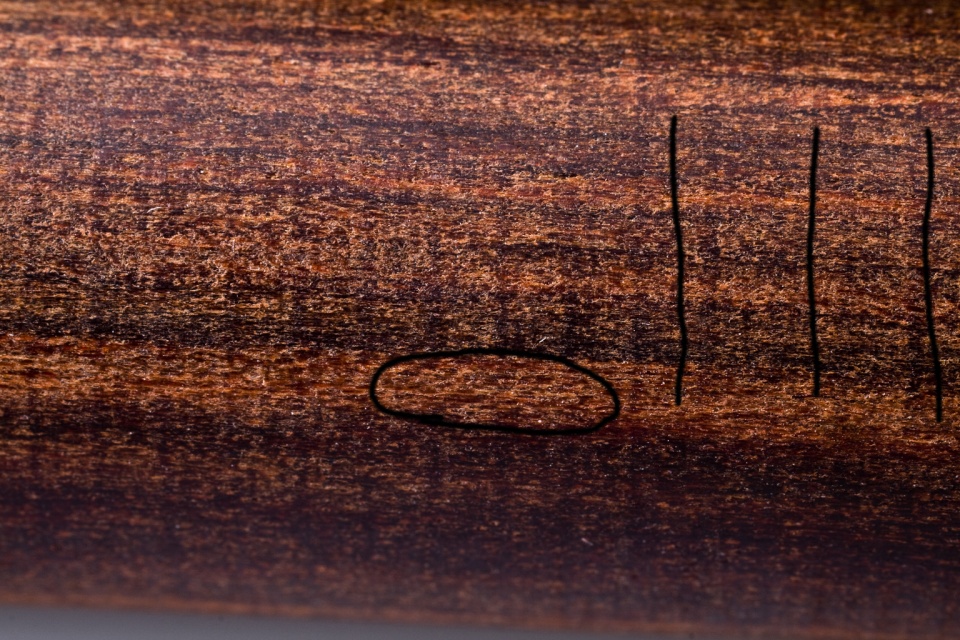
Note the ebonite on the right, it looks sandy. It actually looks like dust was heated up, pressed together and forced into a specific shape. (which is how it is made)
:End Grain:
First thing we noted was visually could not see much out of the ordinary. However, the macro lens sure did pick up a great number of things.
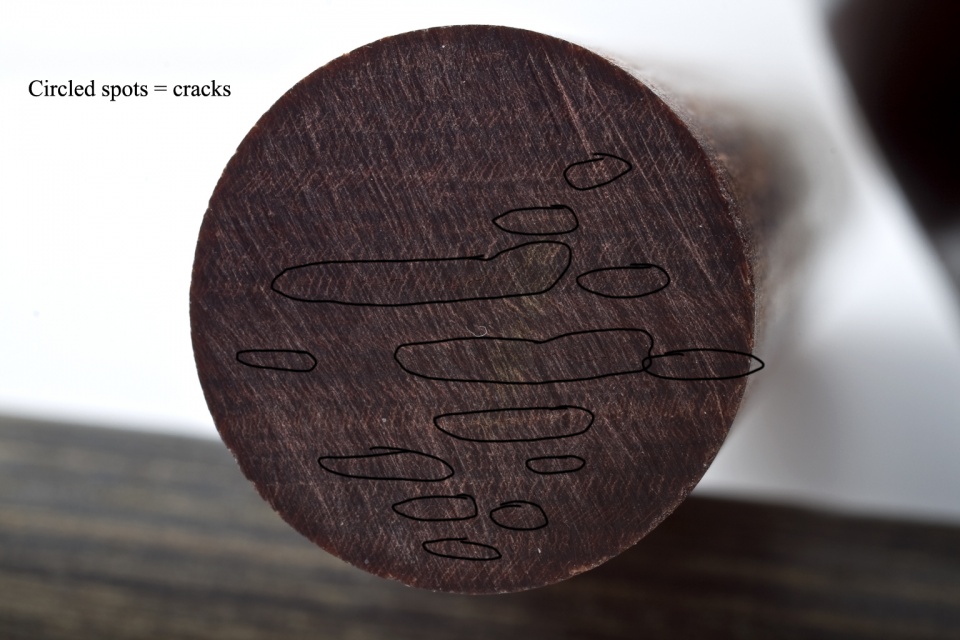
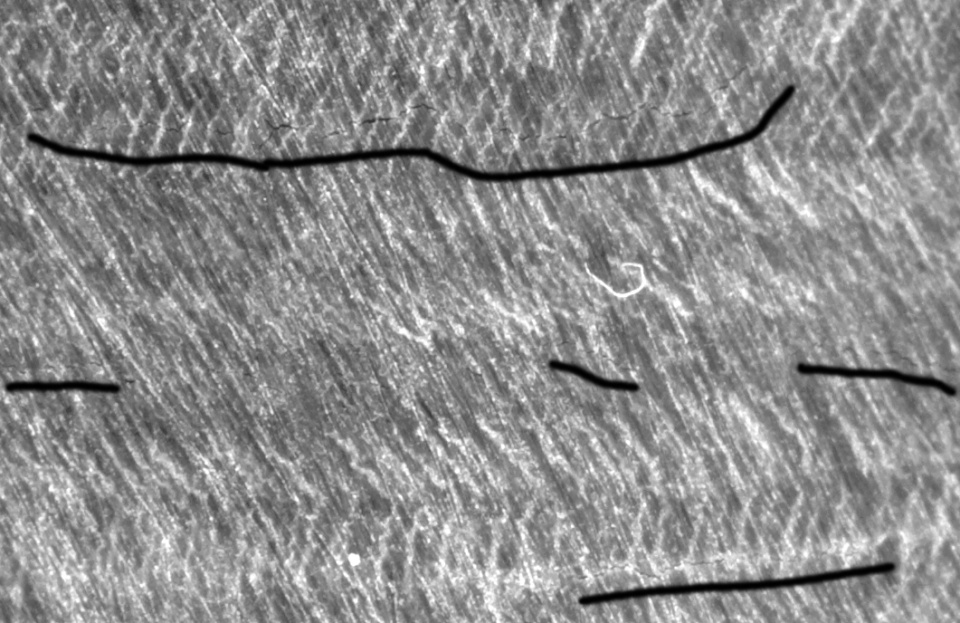
The circled areas are cracks. What is interesting to note here is the growth of the crack, note how irregular it is and how it weaves along the laminate union. Upon closer inspection we see a good number of them as in the second pic.
:Lathe testing:
I took each section, the red, one ebonite and one pen blank that I have (more on this later), I put them on the lathe and somewhat rounded the corner on the end and collected dust, shavings in hopes of gaining some valuable insight into what our mystery material is. This rounding would show depth grain.
this is the group compare shot.
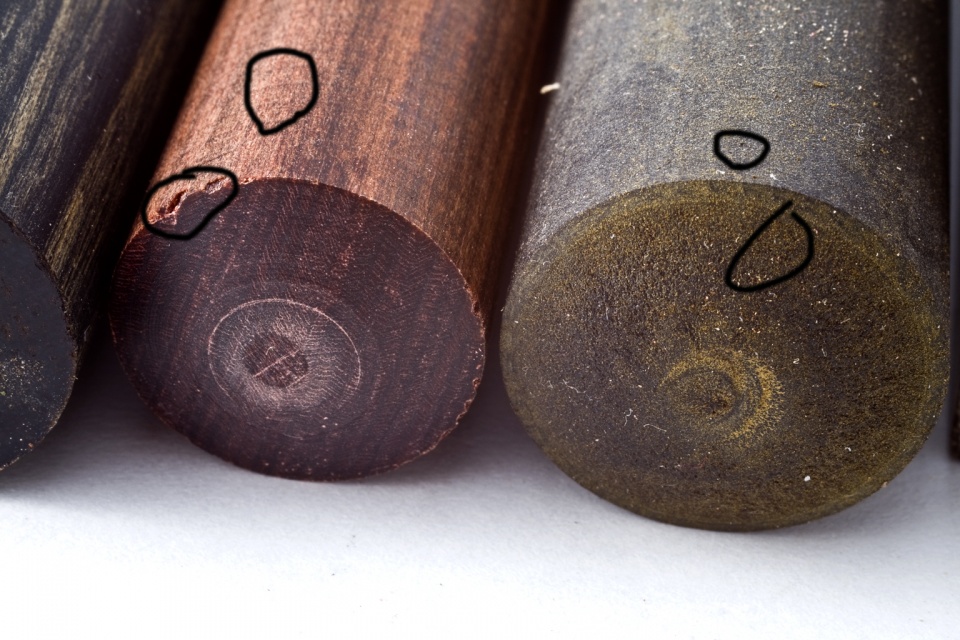
Mystery Rod
These 4 are from our mystery rod.
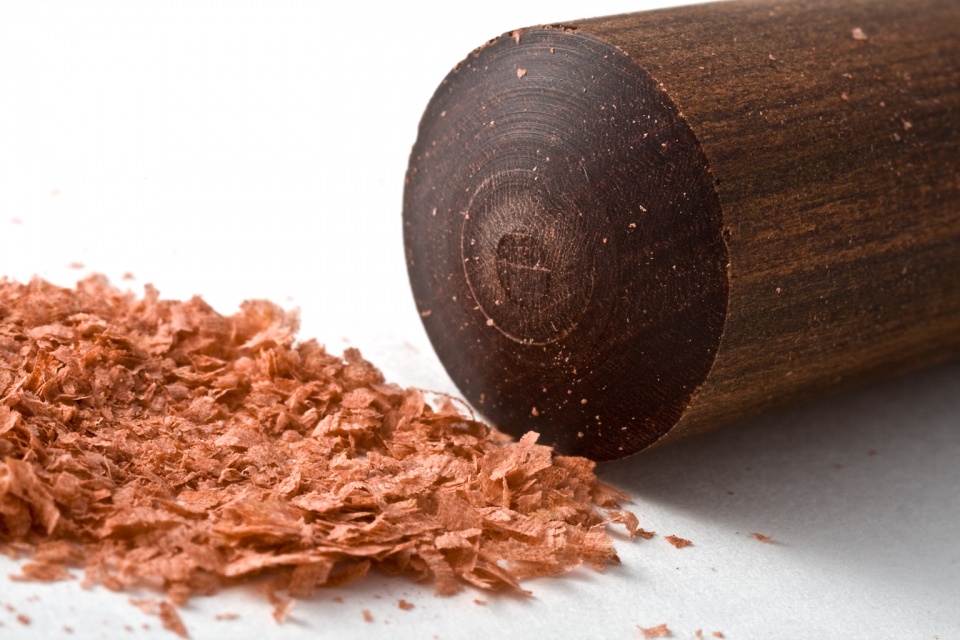
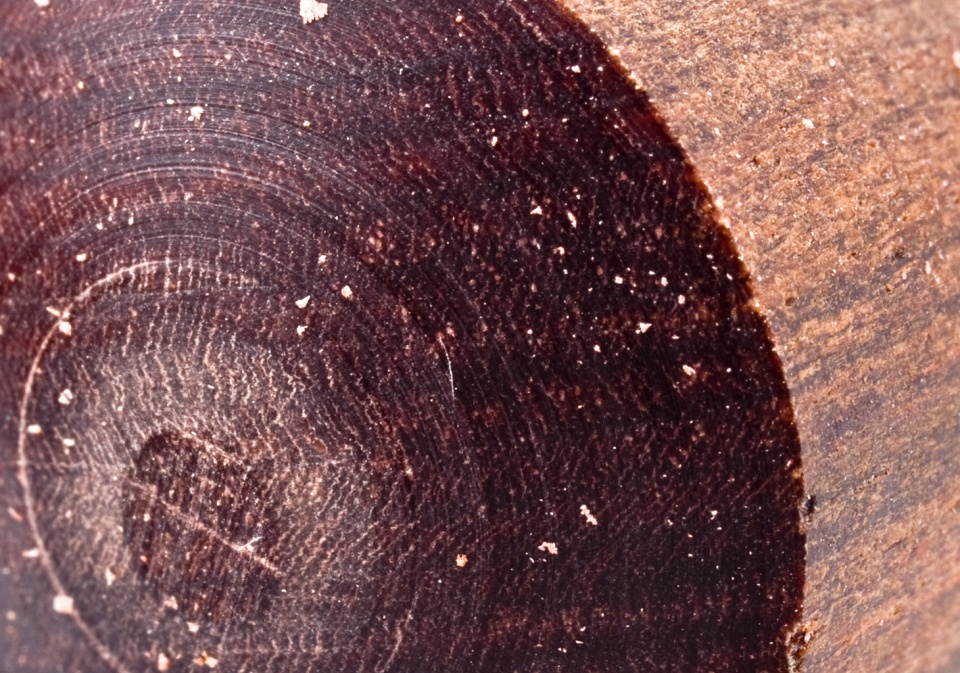
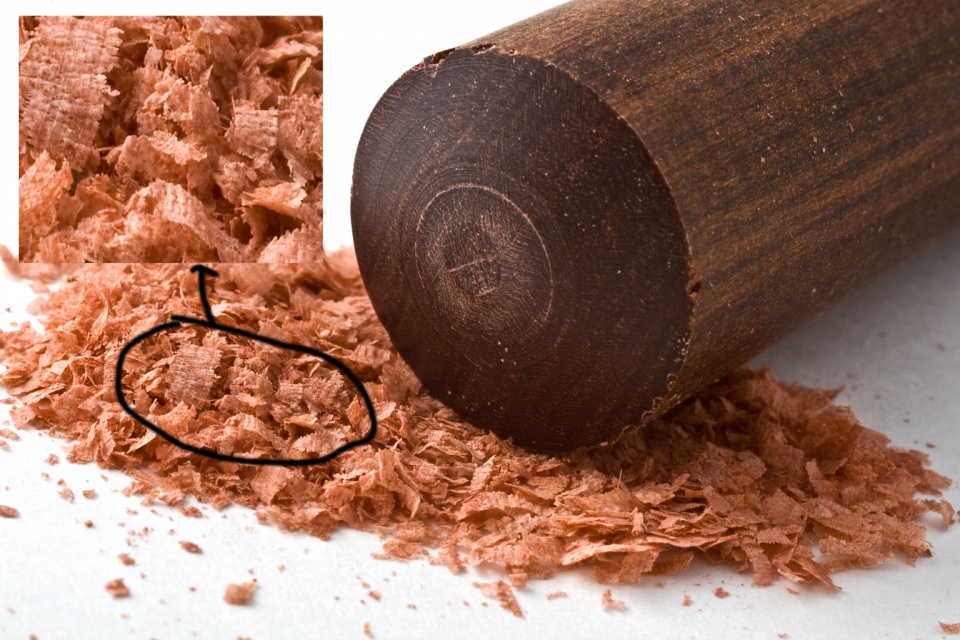
Quite interesting. A closeup view.
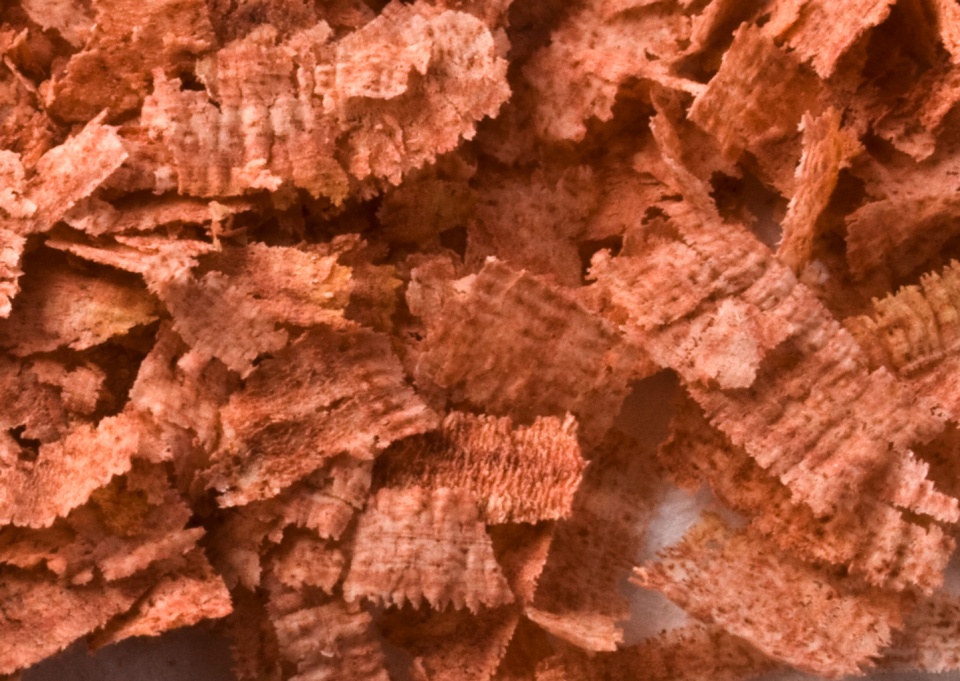
I think I could call it at this point. This clearly looks like wood. We see wood shavings but on a very small scale.
:Ebonite:
But the question ask "IS THIS EBONITE". So no compare would be proper without some ebonite to compare to.
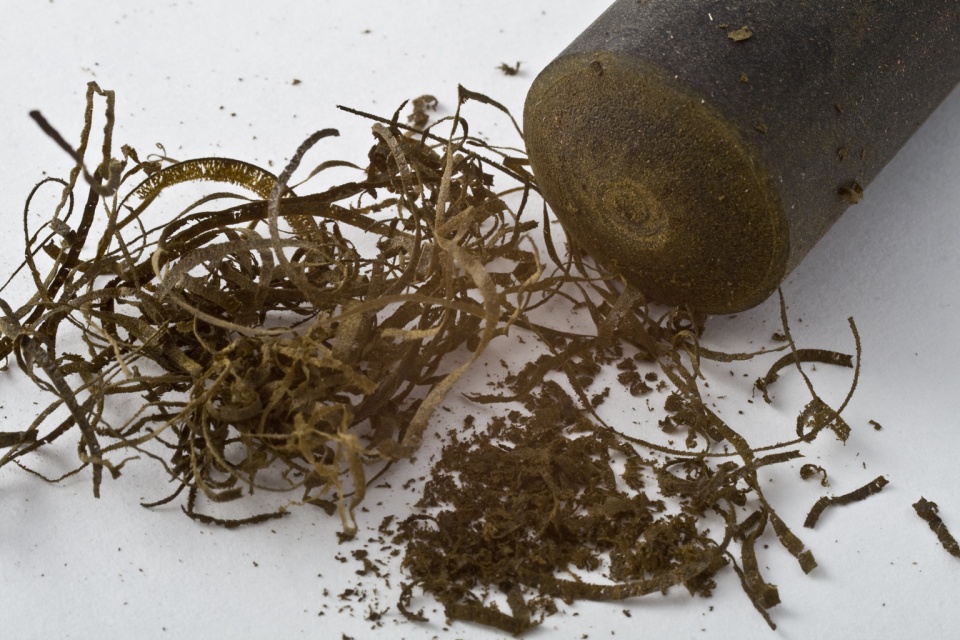
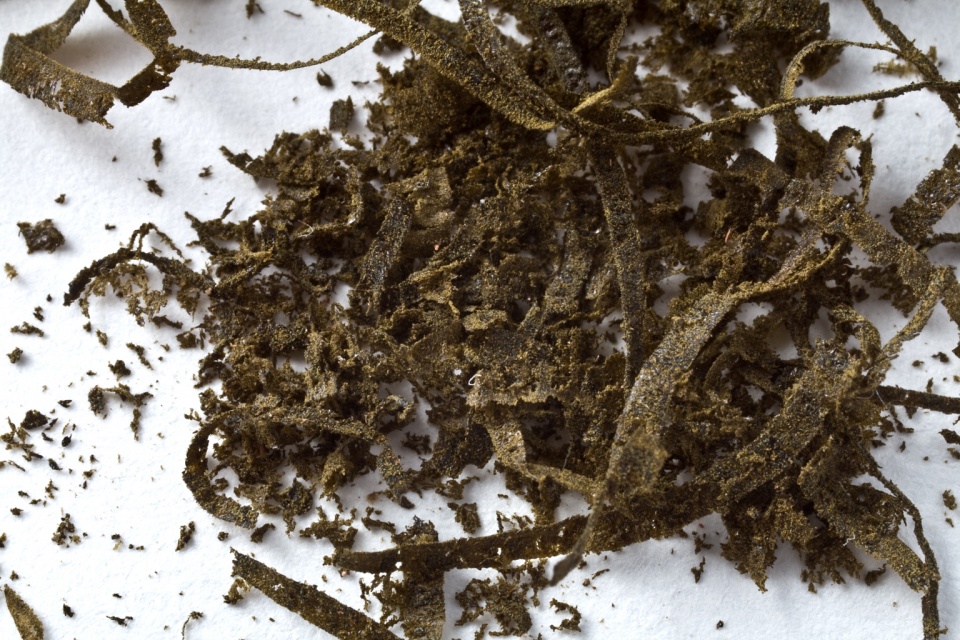
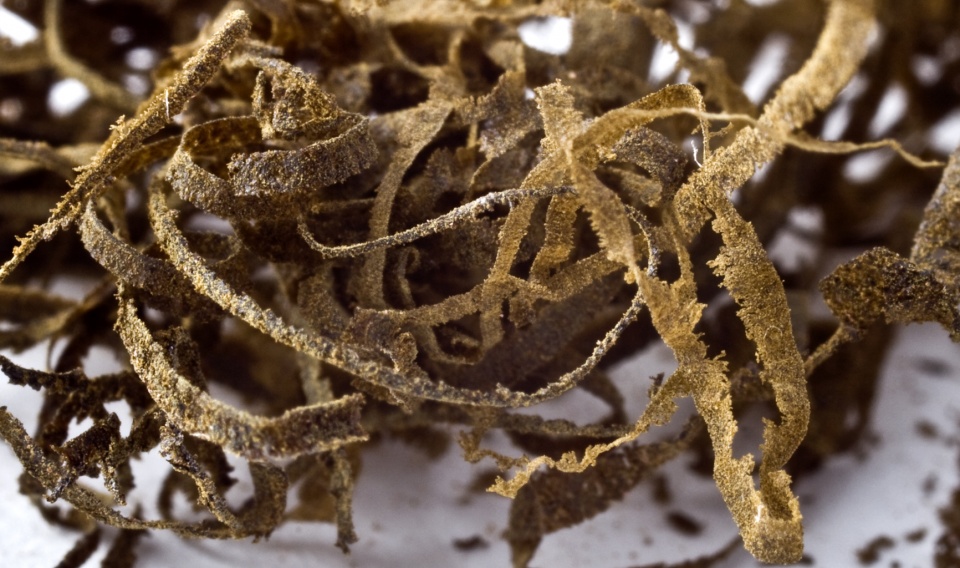
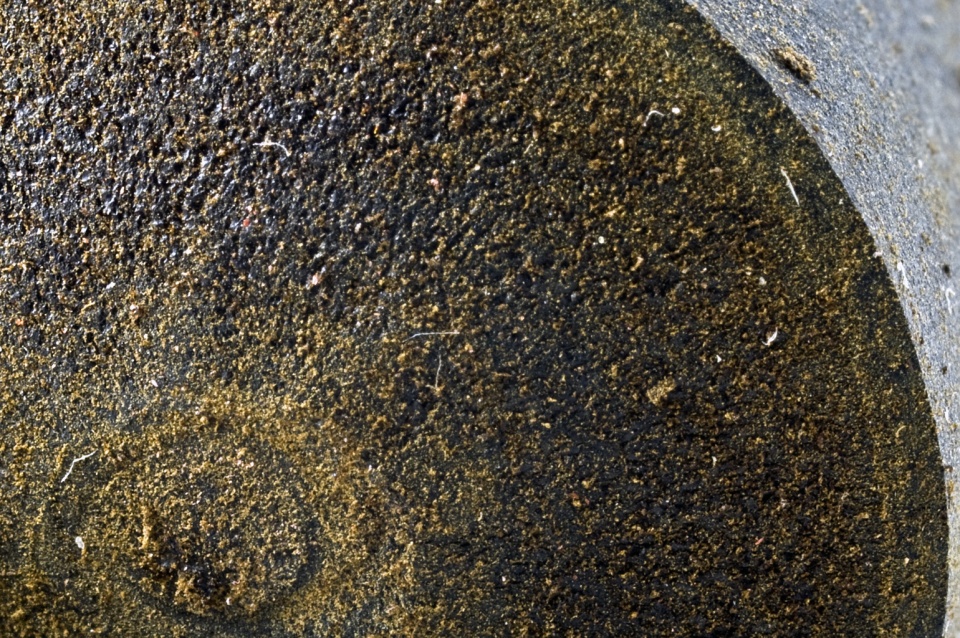
Note how dusty it looks. Even with the strings there is still dust. Next thing to note is the COLOR. This is BLACK ebonite. Yet we see the yellow/orange which is the sulfur content.
Stabilized Spalted Birch
I have some spalted birch that I had professionally stabilized. The process infuses resin into the wood fibers turning it into a reinforcement.
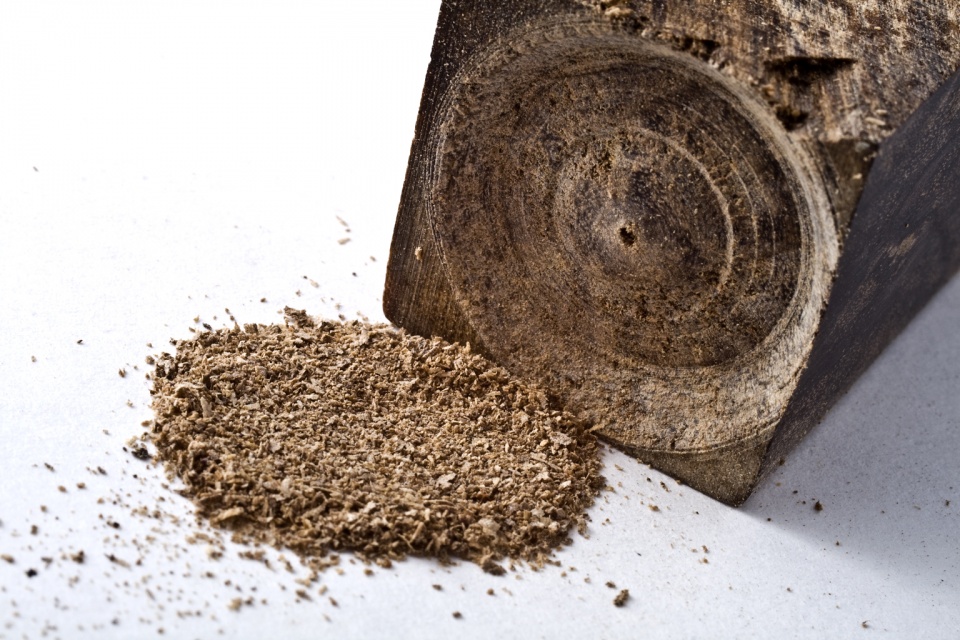
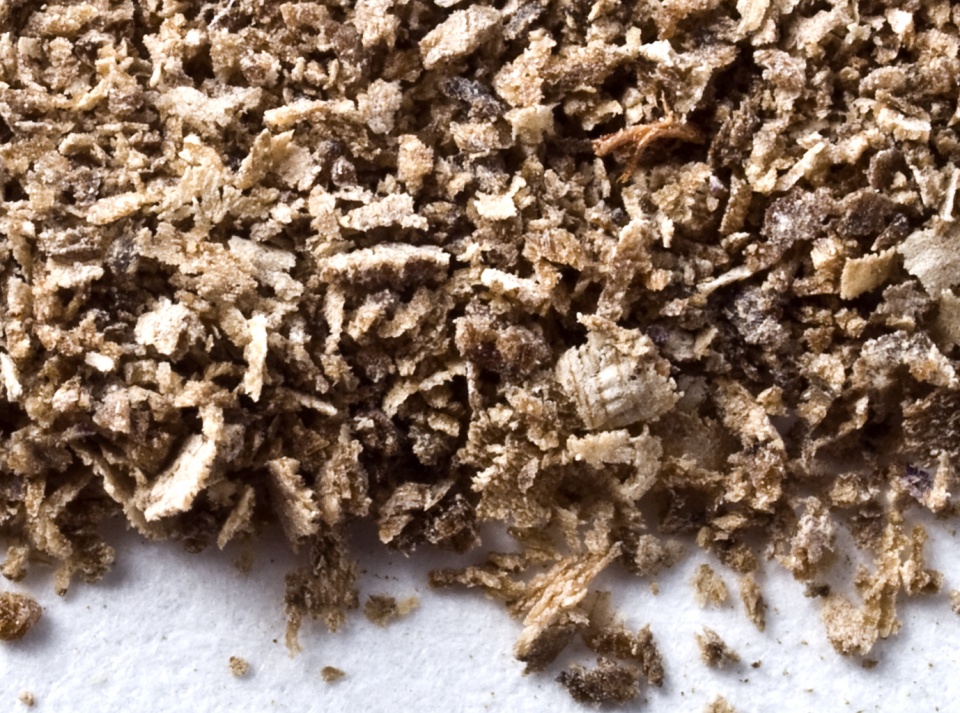
Note here how the chips looks gummed up like glue was added. The wood is spalted which does break down the chips as well.
:Wood Laminate:
I have some wood laminate, this one is made by timbersmith out of birch. They use glue and other things to bond the boards together. Dye makes them yield the interesting patterns. Also worth note is the MSDS for dymondwood list Phenol and formaldehyde as ingredients. This is some nasty chemicals and caution needs to be used when working this material.
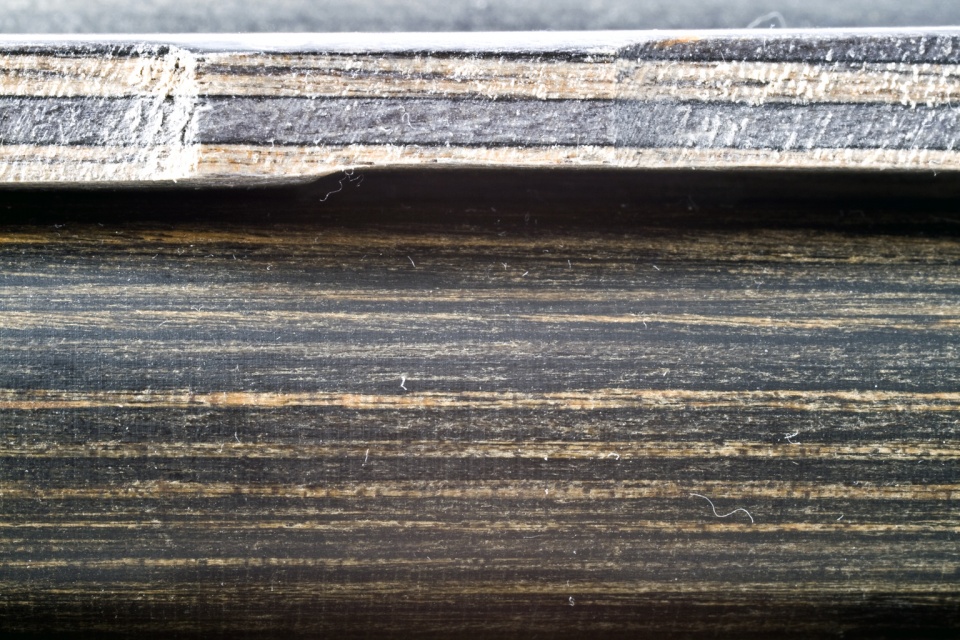
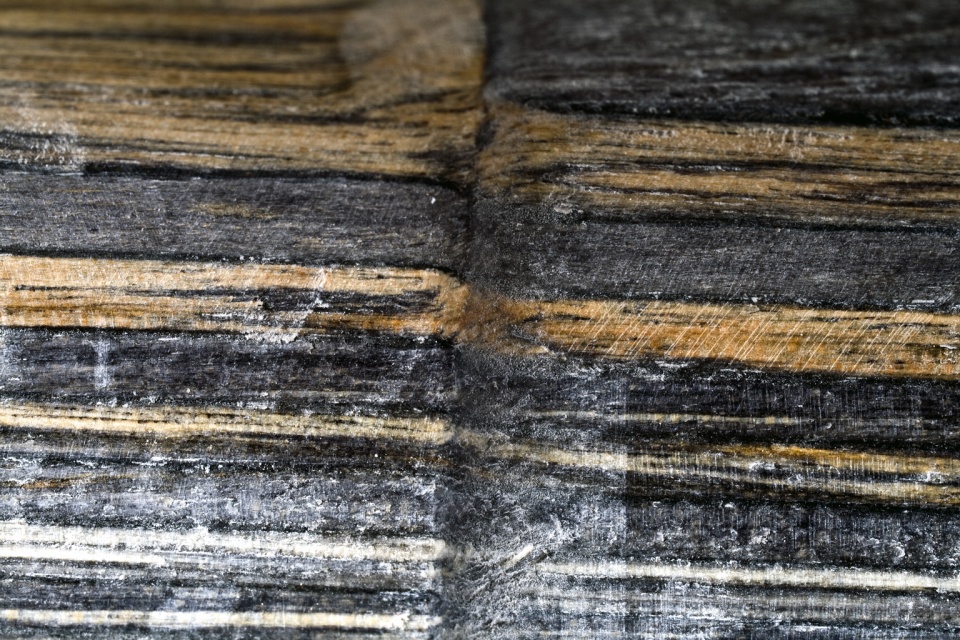
In case anyone is wondering, this wood is a stock that I put on my saiga-12, it's for an AK-47 and I threw it in with the 922R conversion that I did.
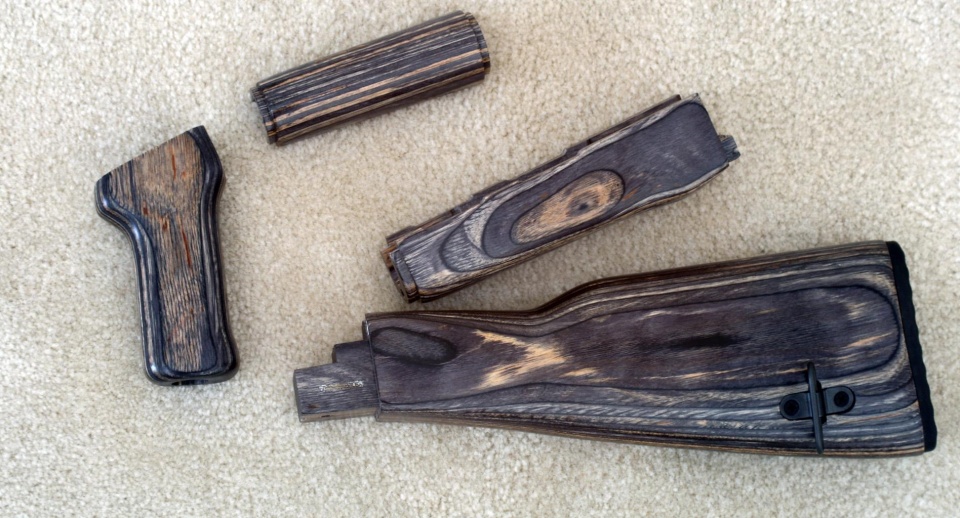
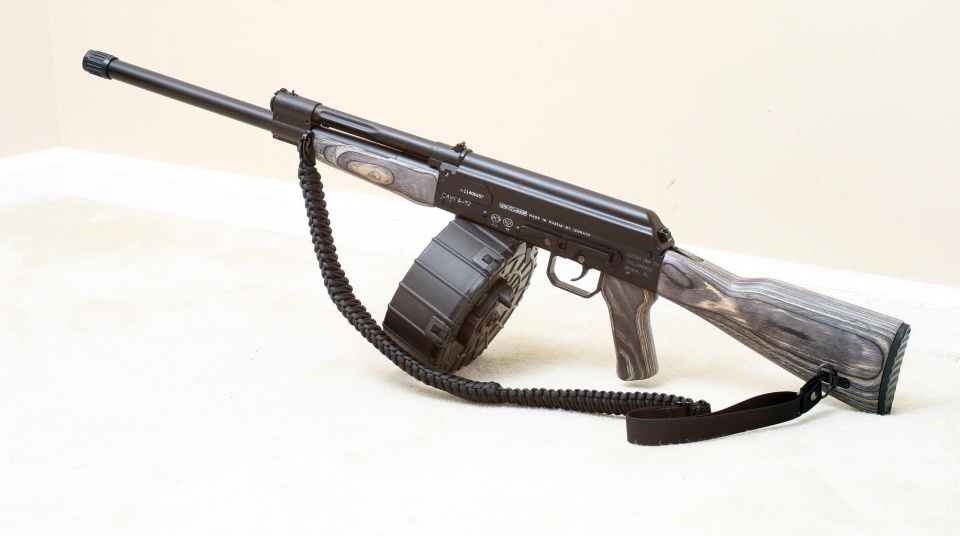
:Conclusion:
This mystery rod shows wood chips, smells like wood, does not show ebonite qualities and does resemble dymondwood. While dymondwood is laminate birch (grown in the North East US mostly, i.e. Vermont) there are many versions and I am unable to tell which one it is.
I also noted cracks on the end grain where it was cut so that indicates caution should be taken when turning and working it in general as the material may be prone to cracking under some conditions.
Since there is some type of glue/epoxy/etc holding the sheets together that means that HEAT is your enemy. It was weaken and damage the bond area and cause untold number of problems.
Enjoy.
After we answer that topic question I shall follow up with "if not ebonite then what is it?"
:Smell and visual:
As I opened the shipping package today I took good note of what it smelled like. I have a very good sense of smell and this did not smell like any ebonite that I have smelled before. This may not mean it's not ebonite but it did rule out many types of ebonite.
Here we see a side by side shot of the mystery blank (left) and black Nikko ebonite (japanese) (right), also the very end right is Marine blue NYH Ebonite (german)
First thing to note, the banding marks on the left block. Looks like there was a layer of one material with grain direction in a slant was pressed to another layer of same or similar dyed material but grain direction was different, thus creating a hatch pattern.
The banding is from being turned. It was only present on the red block.
Note the ebonite on the right, it looks sandy. It actually looks like dust was heated up, pressed together and forced into a specific shape. (which is how it is made)
:End Grain:
First thing we noted was visually could not see much out of the ordinary. However, the macro lens sure did pick up a great number of things.
The circled areas are cracks. What is interesting to note here is the growth of the crack, note how irregular it is and how it weaves along the laminate union. Upon closer inspection we see a good number of them as in the second pic.
:Lathe testing:
I took each section, the red, one ebonite and one pen blank that I have (more on this later), I put them on the lathe and somewhat rounded the corner on the end and collected dust, shavings in hopes of gaining some valuable insight into what our mystery material is. This rounding would show depth grain.
this is the group compare shot.
Mystery Rod
These 4 are from our mystery rod.
Quite interesting. A closeup view.
I think I could call it at this point. This clearly looks like wood. We see wood shavings but on a very small scale.
:Ebonite:
But the question ask "IS THIS EBONITE". So no compare would be proper without some ebonite to compare to.
Note how dusty it looks. Even with the strings there is still dust. Next thing to note is the COLOR. This is BLACK ebonite. Yet we see the yellow/orange which is the sulfur content.
Stabilized Spalted Birch
I have some spalted birch that I had professionally stabilized. The process infuses resin into the wood fibers turning it into a reinforcement.
Note here how the chips looks gummed up like glue was added. The wood is spalted which does break down the chips as well.
:Wood Laminate:
I have some wood laminate, this one is made by timbersmith out of birch. They use glue and other things to bond the boards together. Dye makes them yield the interesting patterns. Also worth note is the MSDS for dymondwood list Phenol and formaldehyde as ingredients. This is some nasty chemicals and caution needs to be used when working this material.
In case anyone is wondering, this wood is a stock that I put on my saiga-12, it's for an AK-47 and I threw it in with the 922R conversion that I did.
:Conclusion:
This mystery rod shows wood chips, smells like wood, does not show ebonite qualities and does resemble dymondwood. While dymondwood is laminate birch (grown in the North East US mostly, i.e. Vermont) there are many versions and I am unable to tell which one it is.
I also noted cracks on the end grain where it was cut so that indicates caution should be taken when turning and working it in general as the material may be prone to cracking under some conditions.
Since there is some type of glue/epoxy/etc holding the sheets together that means that HEAT is your enemy. It was weaken and damage the bond area and cause untold number of problems.
Enjoy.
Attachments
-
 IMG_1351.jpg310.1 KB · Views: 1,846
IMG_1351.jpg310.1 KB · Views: 1,846 -
 IMG_1348.jpg152.1 KB · Views: 8,922
IMG_1348.jpg152.1 KB · Views: 8,922 -
 IMG_1330.jpg336.3 KB · Views: 1,788
IMG_1330.jpg336.3 KB · Views: 1,788 -
 IMG_1333.jpg163.3 KB · Views: 1,751
IMG_1333.jpg163.3 KB · Views: 1,751 -
 IMG_1334.jpg236.7 KB · Views: 1,741
IMG_1334.jpg236.7 KB · Views: 1,741 -
 IMG_1380.jpg238.6 KB · Views: 2,220
IMG_1380.jpg238.6 KB · Views: 2,220 -
 IMG_1365.jpg258.7 KB · Views: 2,002
IMG_1365.jpg258.7 KB · Views: 2,002 -
 IMG_1364.jpg197.5 KB · Views: 1,693
IMG_1364.jpg197.5 KB · Views: 1,693 -
 IMG_1362.jpg255.2 KB · Views: 1,657
IMG_1362.jpg255.2 KB · Views: 1,657 -
 IMG_1359.jpg328.4 KB · Views: 1,724
IMG_1359.jpg328.4 KB · Views: 1,724 -
 IMG_1371.jpg428.5 KB · Views: 1,832
IMG_1371.jpg428.5 KB · Views: 1,832 -
 IMG_1369.jpg247.3 KB · Views: 1,810
IMG_1369.jpg247.3 KB · Views: 1,810 -
 IMG_1372.jpg217.7 KB · Views: 1,679
IMG_1372.jpg217.7 KB · Views: 1,679 -
 IMG_1367.jpg314.6 KB · Views: 1,701
IMG_1367.jpg314.6 KB · Views: 1,701 -
 IMG_1377.jpg256.5 KB · Views: 1,857
IMG_1377.jpg256.5 KB · Views: 1,857 -
 IMG_1375.jpg338.9 KB · Views: 1,787
IMG_1375.jpg338.9 KB · Views: 1,787 -
 IMG_1337.jpg351.4 KB · Views: 1,884
IMG_1337.jpg351.4 KB · Views: 1,884 -
 IMG_1339.jpg307.4 KB · Views: 1,690
IMG_1339.jpg307.4 KB · Views: 1,690 -
 ak47-furniture.jpg220 KB · Views: 3,652
ak47-furniture.jpg220 KB · Views: 3,652 -
 saiga-12-ak-furniture.jpg114.3 KB · Views: 3,932
saiga-12-ak-furniture.jpg114.3 KB · Views: 3,932
Last edited:
wood-of-1kind
Member
Conclusion:
Ed, Sherlock Holmes has nothing on you. Fantastic analysis and the usual superb photos to
help solve another 'mystery". Thank you for taking the time to impart knowledge.
Ed, Sherlock Holmes has nothing on you. Fantastic analysis and the usual superb photos to
help solve another 'mystery". Thank you for taking the time to impart knowledge.
Ed, I hope the moderators can somehow save your reply or put it in the library or whatever they can do to make sure it doesn't go away and so people to reference it when they have the same questions. I know how much trouble it is to put together a post like this, let alone the photographs! I didn't realize you were shooting with a microscope! I can't thank you enough for the reply and taking the time to piece this together. -Aaron Meredith
thebillofwrites
Member
Gosh Ed, your teaser said maybe a few days, and you knocked it out in a few hours  )
)
Good work.......2 thumbs up.
Bill
Good work.......2 thumbs up.
Bill


